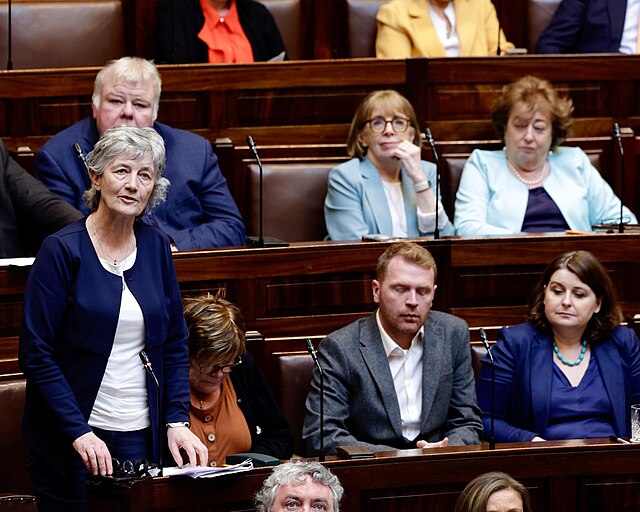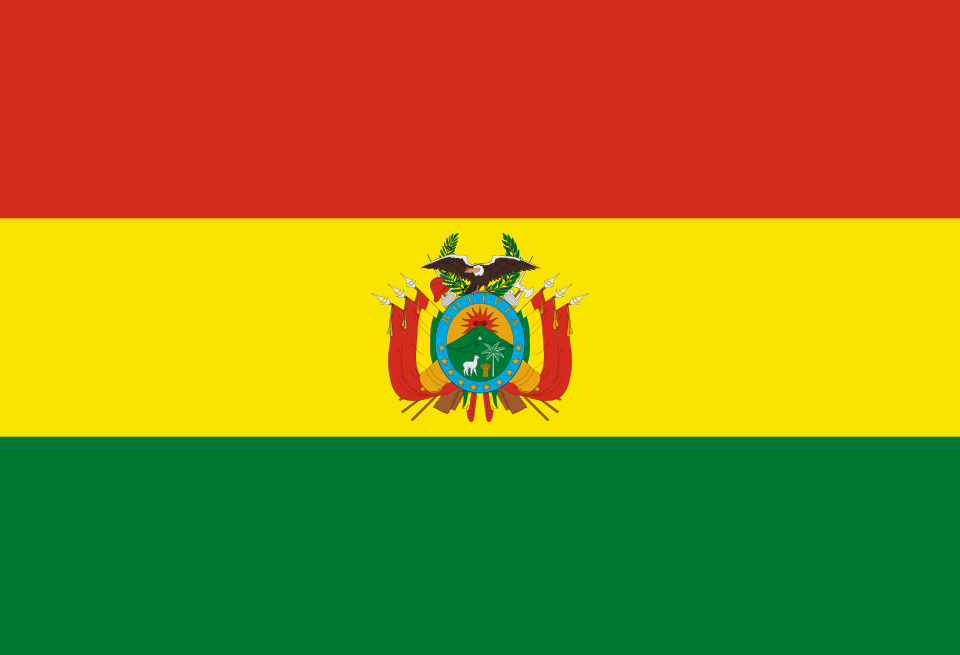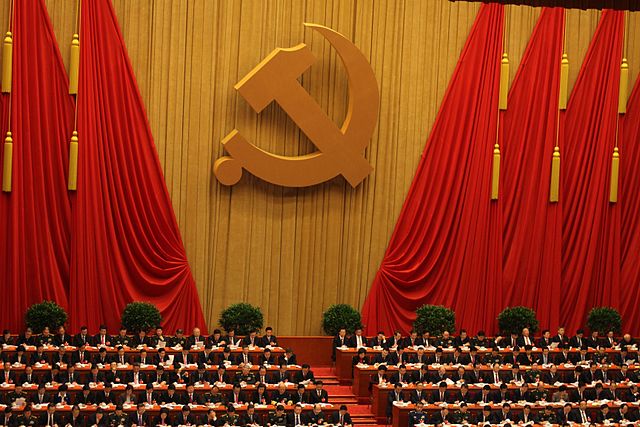The Editor’s Note
Welcome back to another issue of Outside OX1! As the crisp chill of Michaelmas settles over Oxford and the term gathers momentum, we turn our gaze outward: to elections, leadership, and shifting power across continents. This edition explores a world in motion: political change, strategic ambition, and the quiet assertion of new voices on the global stage.
Firstly, Sol White brings us to Ireland, where Catherine Connolly’s election as President ushers in a fresh era of independent leadership. In a political landscape long dominated by establishment parties, Connolly’s victory, backed by a coalition of progressives, stands as a powerful statement on integrity, inclusion, and grassroots politics.
Lola Dunton-Milenkovic takes us to South America, where Bolivia has turned a historic page. After two decades of continuous leftist rule, Rodrigo Paz’s centrist victory marks the beginning of a new political chapter. Amid economic crisis and diplomatic recalibration, she examines what this shift could mean for Bolivia’s future and for the wider region’s political landscape.
Meanwhile, Gabriela Austin reports from Beijing, where China’s latest Five-Year Plan, dubbed “AI Plus,” signals the country’s intention to weave artificial intelligence into every facet of life, from governance to global cooperation. Her piece unpacks the technological ambition driving this plan, as well as the economic and structural challenges that might test its success.
Catherine Connolly Becomes President of Ireland
Sol White

On 25 October, independent TD (member of Irish Parliament) Catherine Connolly was elected as the new President of Ireland, succeeding the widely adored Michael D. Higgins after his fourteen-year tenure. Her victory marks a new chapter in Irish politics, blending left-wing continuity with quiet defiance of the traditional party system that has dominated the presidency for decades.
Connolly, a barrister and long-time representative for Galway West, secured 63% of the vote, defeating Fine Gael’s (Ireland’s centre-right party) candidate, former minister Heather Humphreys, who won 29.5%. As a lifelong advocate devoted to social justice and equality, Connolly’s rise was backed by a broad coalition of parties and independents, including Sinn Féin, the Social Democrats, and People Before Profit. Her victory has been hailed as a triumph for grassroots politics and for those seeking a less ceremonial presidency which is more outspoken on social reform.
Connolly, 67, began her political career on Galway City Council before being elected to the Dáil (the Irish Parliament) in 2016. Known for her calm yet assertive parliamentary interventions, she won respect across party lines for her integrity and her focus on social concerns often overlooked in national debates: mental health, housing, and the erosion of public services. A fluent Irish speaker and champion for neutrality, Connolly has promised to be “an inclusive president for all,” emphasising her plan to continue Higgins’ cultural and humanitarian legacy while steering the presidency into a more politically aware era.
Sinn Féin’s backing proved decisive. Party leader Mary Lou McDonald described Connolly as “a President who speaks for a generation looking to a future of hope and unity”. Analysts believe Sinn Féin viewed her candidacy as a way to project influence without appearing overtly partisan, following criticism that the presidency should remain above party politics. Smaller left-wing parties and independents rallied around Connolly as a candidate of principle: an alternative to both establishment figures and populist challengers.
Her election has been the subject of some debate and controversy, however. Critics have pointed out that despite there being three names on the ballot paper, only two candidates actually made it to voting day, following ex-Gaelic Football manager Jim Gavin’s (backed by Fianna Fail, the centrist party) withdrawal from the election. This is down from the six candidates running in the last election. Additionally, the number of spoiled ballots reached record highs at 13% (213,738), up from just 1% in 2018, perhaps showing real discontent with the lack of choice.
Meanwhile, some Irish voters still joked that the campaign lacked the “entertainment factor” of an earlier rumoured candidate, UFC star Conor McGregor, whose brief flirtation with politics brought global attention but little seriousness.
Connolly will be inaugurated at Áras an Uachtaráin on 11 November.
Bolivian Elections: Decades of Leftist Rule Ends
Lola Dunton-Milenkovic

On 19 October, centrist senator Rodrigo Paz won Bolivia’s presidential runoff, defeating conservative rival Jorge Quiroga. His election will bring an end to 20 years of continuous leftist rule under the Movement for Socialism (MAS) party, and was fuelled by the country’s worst economic crisis in a generation.
Christian Democrat Paz won 54.6% of the vote, beating Quiroga’s 45.4%. Though MAS once enjoyed overwhelming support from the country’s Indigenous majority, they now failed to even make it into the final round of voting.
The dominant factor of the runoff campaign was Bolivia’s fragile economy. The country’s once plentiful natural gas exports have plummeted, inflation is at a 40-year high, and fuel is scarce. Both electoral candidates sought to roll back MAS’s state-led model, but whilst Quiroga proposed sweeping cuts and an IMF bailout, Paz favored gradual reform, including tax incentives for small businesses and regional fiscal autonomy. Following his victory, Paz promised to “try to build an economy for the people. The state is no longer going to be the central axis”.
Moreover, Paz’s moderate policies, notably his pledge to maintain social programs while also promoting private sector-led growth, have resonated with left-leaning voters. He pledged to end fuel shortages and address Bolivia’s economic problems by opening the country to wider international investment and by stimulating private-sector growth. He campaigned with the slogan “capitalism for all”, promising free-market reforms and a commitment to help those impoverished with social programmes. Amongst vows to ease access to credit for small businesses, he also guaranteed to lower certain taxes, reduce import tariffs, crack down on corruption, decentralise the government, and cut fuel subsidies (which resulted in shortages and huge queues, despite keeping prices low).
In recent years, Bolivia has seen itself isolated on the world stage, but both runoff candidates sought to strengthen diplomatic ties with the United States and seek financial support to stabilise Bolivia’s fragile economy. Relations have been strained since 2008, when Bolivia’s president at the time, Evo Morales, expelled the US ambassador and the Drug Enforcement Administration for allegedly conspiring against his government. The US in turn repeatedly accused Bolivia, one of the world’s top producers of cocaine, of not meeting its anti-narcotics obligation, and has criticised Bolivia’s recognition of Venezuela’s President Nicolás Maduro whose election was internationally condemned as neither free nor fair. Paz is now eager to restore Bolivia’s ties with the US. In late September, he revealed plans for a $1.5 billion economic cooperation deal with US officials to ensure fuel supplies and the US State Department has said it looks forward to “partnering with President-elect Rodrigo Paz to restore economic stability, expand private-sector growth, and strengthen security”.
Paz’s campaign was also boosted by his running mate Edman Lara, a former police officer known for his humble upbringing and viral social media videos in which he exposed corruption within the police. According to analysts, it was Lara’s populist appeal that helped Paz connect with younger and working-class voters.
Glaeldys Gonzalez Calanche, analyst for the Southern Andes at International Crisis Group, has stated that, “This election marks a political turning point. Bolivia is heading in a new direction”. However, although his party won the largest number of seats in Congress, it will not have a majority to ensure the passage of laws and reforms, which will force Paz to forge alliances. He takes office on 8 November.On 19 October, centrist senator Rodrigo Paz won Bolivia’s presidential runoff, defeating conservative rival Jorge Quiroga. His election will bring an end to 20 years of continuous leftist rule under the Movement for Socialism (MAS) party, and was fuelled by the country’s worst economic crisis in a generation.
Christian Democrat Paz won 54.6% of the vote, beating Quiroga’s 45.4%. Though MAS once enjoyed overwhelming support from the country’s Indigenous majority, they now failed to even make it into the final round of voting.
The dominant factor of the runoff campaign was Bolivia’s fragile economy. The country’s once plentiful natural gas exports have plummeted, inflation is at a 40-year high, and fuel is scarce. Both electoral candidates sought to roll back MAS’s state-led model, but whilst Quiroga proposed sweeping cuts and an IMF bailout, Paz favored gradual reform, including tax incentives for small businesses and regional fiscal autonomy. Following his victory, Paz promised to “try to build an economy for the people. The state is no longer going to be the central axis”.
Moreover, Paz’s moderate policies, notably his pledge to maintain social programs while also promoting private sector-led growth, have resonated with left-leaning voters. He pledged to end fuel shortages and address Bolivia’s economic problems by opening the country to wider international investment and by stimulating private-sector growth. He campaigned with the slogan “capitalism for all”, promising free-market reforms and a commitment to help those impoverished with social programmes. Amongst vows to ease access to credit for small businesses, he also guaranteed to lower certain taxes, reduce import tariffs, crack down on corruption, decentralise the government, and cut fuel subsidies (which resulted in shortages and huge queues, despite keeping prices low).
In recent years, Bolivia has seen itself isolated on the world stage, but both runoff candidates sought to strengthen diplomatic ties with the United States and seek financial support to stabilise Bolivia’s fragile economy. Relations have been strained since 2008, when Bolivia’s president at the time, Evo Morales, expelled the US ambassador and the Drug Enforcement Administration for allegedly conspiring against his government. The US in turn repeatedly accused Bolivia, one of the world’s top producers of cocaine, of not meeting its anti-narcotics obligation, and has criticised Bolivia’s recognition of Venezuela’s President Nicolás Maduro whose election was internationally condemned as neither free nor fair. Paz is now eager to restore Bolivia’s ties with the US. In late September, he revealed plans for a $1.5 billion economic cooperation deal with US officials to ensure fuel supplies and the US State Department has said it looks forward to “partnering with President-elect Rodrigo Paz to restore economic stability, expand private-sector growth, and strengthen security”.
Paz’s campaign was also boosted by his running mate Edman Lara, a former police officer known for his humble upbringing and viral social media videos in which he exposed corruption within the police. According to analysts, it was Lara’s populist appeal that helped Paz connect with younger and working-class voters.
Glaeldys Gonzalez Calanche, analyst for the Southern Andes at International Crisis Group, has stated that, “This election marks a political turning point. Bolivia is heading in a new direction”. However, although his party won the largest number of seats in Congress, it will not have a majority to ensure the passage of laws and reforms, which will force Paz to forge alliances. He takes office on 8 November.
‘AI Plus’: Chinese Plans for 2030
Gabriela Austin

The fourth plenum of the central committee of the Chinese Communist Party is underway in Beijing this week. The leaders of China’s ruling Communist Party met in Beijing to frame the next Five-Year-Plan, the fifteenth created since the first was launched in 1953. The intent behind these plans is to instruct and guide the trajectory of national, economic and social development, with this one remaining in place until 2030. Despite how market-dependent China’s economy is, there is (even more so in recent years) a Chinese desire for stability, one that the repetition and schedule of the Five-Year-Plan provides. Almost 200 members make up the central committee, from politicians, local governors, and corporate lawyers, to CEOs and even former Olympic champions. However, this political theatre is not without its problems. On the night prior to the plenum, the CCP announced an unprecedented purge of nine top generals.
Unlike the White House, where it is easy to discern what is occurring (particularly now that Trump has taken down the wall of the East Wing), with China there is instead always a certain degree of uncertainty regarding what truly takes place behind closed doors in the hotel hosting the fourth plenum. While the plan is expected to be announced next spring, it is common knowledge that it will devote a huge amount of attention to AI, even being dubbed ‘AI Plus’ by the Chinese government. The trajectory for the country looks massively technologized, with schemes to infuse AI applications into six crucial areas: science and technology, industrial production, consumption, quality of life, governance and global cooperation.[3] Unlike the US, China doesn’t want to focus on making breakthroughs with AI, but rather they want to harness it, and capitalise from it.Indeed, amid China’s trade war with the United States, and the country competing more in high-end manufacturing with Western economies, they have prioritised economic policy and technology. However, the sustainability of the Chinese business model should be acknowledged. While on the one hand, China is creating and implementing this technological super power, on the other hand, it is failing to finance itself. For the last three years, corporate profits have decreased each year. Additionally, corporate tax take has declined, and the budget deficit in China has been rising to very high levels. Therefore, while the fifteenth Five-Year Plan signals China’s ambition to cement its position as a global technological leader, we will have to wait to see whether tensions between rapid innovation and economic sustainability will result in a triumph of progress, or an overreach of power.

